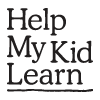What to do with this activity?
From the beginning we need to be alert to the signals our baby makes - signs of their hunger, happiness, tiredness, discomfort. When your baby or toddler yawns it's a clear signal that they are ready for sleep. Babies are so cute when they yawn and apparently babies yawn even before they are born. Many animals yawn too.
No-one knows exactly why we yawn, but it's probably because as we get tired our breathing is slower or shallower. Yawning helps us draw in more oxygen.
The other mysterious thing about yawning is that it is infectious - if one person yawns, it's quite likely that others will also yawn. Look at the video above and see if it makes you want to yawn. Some say that children don't find yawning infectious until after the age of four. Try yawning in front of your baby or toddler to see if they yawn too.
-
Why am I doing this?
Talking is one of the most important skills your child will learn. It seems to happen naturally, but in fact you have a very important role to play. Your baby will learn to talk by hearing other people talk. The more you talk with your baby and respond to their noises and babbles, the more you help them learn to communicate. This will help them in every aspect of their life.
-
How can I do more?
Songs and rhymes are especially good for children as the rhythms and repetitive language make it easier for babies to learn language skills. Babies love songs and rhymes, especially hearing the sound of your voice. This is a great way to help your child to talk and listen. Rhymes with actions explain what words mean - "pour me out" in "I'm a little teapot". You can also create sound effects when you are singing songs and saying rhymes. Use your hands to clap, your fingers to click and your mouth to make playful sounds and whistles.
Rate this activity
How would you rate this activity?
1 = Poor, 5 = Great.


